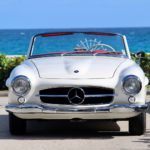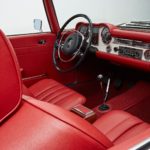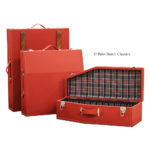
1955-1963 Mercedes 190SL (W121) Buyer’s Guide
Don't dream it. Drive it!
If you are looking for a classically timeless automobile to cruise in on the weekends, look no further. The one of a kind W121 190SL was introduced to the world in 1954 by Maxamilian Hoffman, a marketer who prompted the introduction of the 190SL in the 50’s, and Rudolf Uhlenhaut, an engineer who influenced the first 30 years of the SL models.
The beauty about this car is that they were the product of human hands, no two cars were identical. Between years 1955 and 1963, an estimate of 25,881 190SL’s were produced. By 1961, the base price had risen to $5,129. According to factory figures, 25,881 190SL’s were produced from 1955-1963. Production peaked in 1956 at 4,032 cars, and 1963 saw the least number produced, being 104.
Only 50% have survived!
 As you can see the figures in the table on the right, there were only approximately 10,360 W121’s documented here in the US. That total number of 190SL’s has dramatically been cut in half. Only 50% of the W121’s have survived, and restoration promises to preserve them.
As you can see the figures in the table on the right, there were only approximately 10,360 W121’s documented here in the US. That total number of 190SL’s has dramatically been cut in half. Only 50% of the W121’s have survived, and restoration promises to preserve them.
There are many of reasons why to purchase a 190SL. One of main and most obvious reasons is because of its timeless design. It was voted a Milestone Car by the Milestone Car Society. What owners of a 190SL can all agree on is that the car looks like it is going 60 mph while sitting in your driveway.
Other more important reasons, other than the design, why to purchase the car is because of the dependability, durability, and drive of the car. The 190SL is equipped with a 1.9 liter 4-cylinder engine producing 105 horsepower.
The design was not destined for the racetrack. In regards to road handling, the single joint swing rear axle is based on the proven Mercedes Benz racing design. The synchronized manual transmission allows the driver to shift the car with ease and select the correct gear for any situation, enabling the driver to retain complete control of the car at all times. Parts are readily available through Palm Beach Classics.
Follow the guide!
Before purchasin g a 190SL, follow this guideline in order to avoid investing in a nightmare you may think is in great condition or repairable.
g a 190SL, follow this guideline in order to avoid investing in a nightmare you may think is in great condition or repairable.
First and foremost, buyers must be aware of any rust problems the car may have and walk away from any candidate that exhibits extensive rust, particularly in structural areas. Rust will become the most labor intensive and expensive difficulty to deal with after purchase.
The reason a 190SL may have rust is due to double wall construction and clogged drain holes. Unfortunately because of this, many of these cars rusted from the inside out.
When observing the car, make sure to take a good look at the front fender well. If a seam at the light bucket is present, a poor welding job of the overlapping nose replacement was done. Learned from experience, it is better to purchase a car with original body panels with light rust, than purchasing a 190SL with badly repaired panels.
 If you are looking for originality, the best way to determine if the car is original is to check the VIN plates.
If you are looking for originality, the best way to determine if the car is original is to check the VIN plates.
If the numbers match, there’s a very good chance it doesn’t have a history of being a project car. The diagram on the left will help you get a better understanding of where to look for VIN plates.
Another way to test for originality is to obtain the data sheet or vehicle data card from the Irvine Classic Center and verify the numbers of the steering box, front axles, rear axle, engine, and transmission.
Palm Beach Classics has been in business for over 10 years. We own several unique 190SL’s that are up for sale. Not only do we sell beautiful vintage automobiles, we also sell hard to find parts and offer restoration work. Please contact us for any further information.












